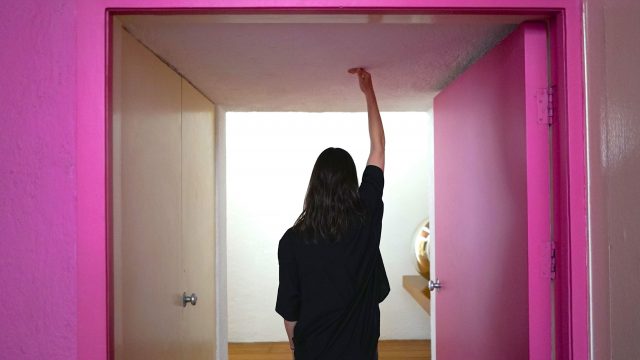The Proposal: Ringside Duel, by Alexander Miller

There is a book published in 1991 called A Quiet Revolution that centers around the inspiring work of Guadalajaran born modernist architect Luis Barragán, featuring a collection of material culled from his archives; documents, drawings, and photographs. For the first time since his passing, Barragán’s work has been made the property of the Barragán Foundation located in Switzerland. Ironically, the foundation hasn’t done much in favor of the late architect’s work.
Now another kind of revolution is going on concerning the work of Barragán and, in some respects, this call to arms is quiet as well. Leading the charge is Jill Magid. Magid is a multifaceted talent, a self-styled artist, writer and, taking on new reigns, she’s also the director/leading voice of documentary feature The Proposal. The driving force of her inspiration is her profound affinity for the architecture of Barragán and her rebel yell, the genesis of this documentary, is her lofty gambit with Vitra, the Swiss furniture company and design museum. After Barragán’s death, his professional archive, containing many drawings and sketches, as well as the copyright to many of his works, fell into the hands of Federica Zanco, who received this generous bounty as an engagement present from her then-fiance, Rolf Fehlbaum, the chairman of Vitra, on her insistence that Barragán’s work would be a suitable replacement for an engagement ring. You’d think that Zanco’s unique request would be an indication that she too, is an avid admirer of the architect but, as Magid emphasizes throughout The Proposal, Zanco’s anything but. Aside from lording over Barragán’s work, her restrictive treatment, including the geographical remove (Switzerland is, after all, a long ways from Guadalajara), Zanco has gone as far as removing the accent marker from Barragán’s name. It’s as if she’s not only incidentally offending those who desire to seek out his work as well as his native friends, families, and admirers, but also implying some vulgar sort of colonized branding by doing so.
Well, Magid doesn’t start petitions or stage hunger strikes. Her revolution is a bit more feisty and daring. In agreeance with his relatives, she requisitioned a portion of Barragán’s ashes, turning his literal remains into a diamond, where it was then mounted in a ring, which Magid then would present to Zanco. After all, the archive was an informal engagement ring; is it so strange for someone to offer a literal ring to Ms. Zanco? Of course, this move attracted a bit of controversy but, by doing so, Magid brought a broader level of awareness to her cause. It might sound extreme or disrespectful but if you turn the stakes around, who’s to say how far is too far for one to go?
As a film lover, who knows what I might do if, say, some neophyte magnate had the missing reel to The Magnificent Ambersons or if Sam Peckinpah’s half cousin’s stepson was using the five-plus hour cut of The Wild Bunch as a footstool and refused access to anyone?
The Proposal is a unique and compelling documentary in that Magid is taking a story about her passion as an artist, putting herself at the film’s center and, in articulating her vision, taking on an international adversary through a metaphysical form of protest that dually serves as conceptual art. It’s a bold move in both a literal sense and a thematic one. Concerning the structure of The Proposal, much of the film consists of Magid recounting her journey and reading the graceful yet prickly correspondence between herself and Zanco. It’s quite a unique parrying of poison pen letters in that these ones feel as if they were written with lighter-than-feather quills and worded with eloquence. Magid starts each message with “Dearest Federica.”
There’s a strange balance that hangs in the construction of The Proposal. Magid has made a movie that is mainly about internalized themes; emotion, passion, admiration, yearning, frustration. It might sound reductive to say that she’s guided by her emotions because, after all, isn’t all art emotional? The film is at times lofty and goes dangerously close to losing momentum and interest. At first, I was aggravated by the lack of context with Barragán’s work, hoping for a meditative admiration piece along the lines of Heinz Emigholz’s many architectural love letters or the hypnotic tranquility of Hiroshi Teshigahara’s Antonio Gaudí. But this isn’t a “sit-and-stare” tribute because The Proposal is about the way Barragán’s work is being kept from us. Magid’s artistic instincts might not be immediately accessible but they are bold.

























